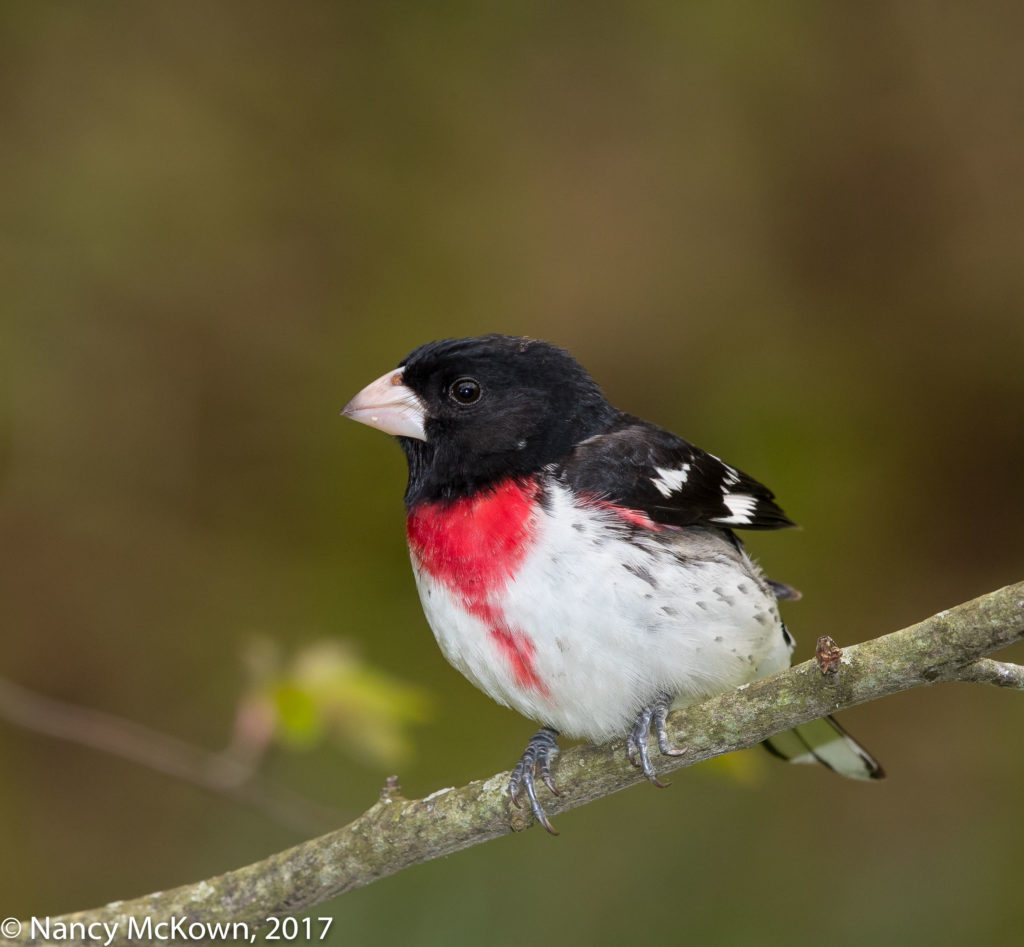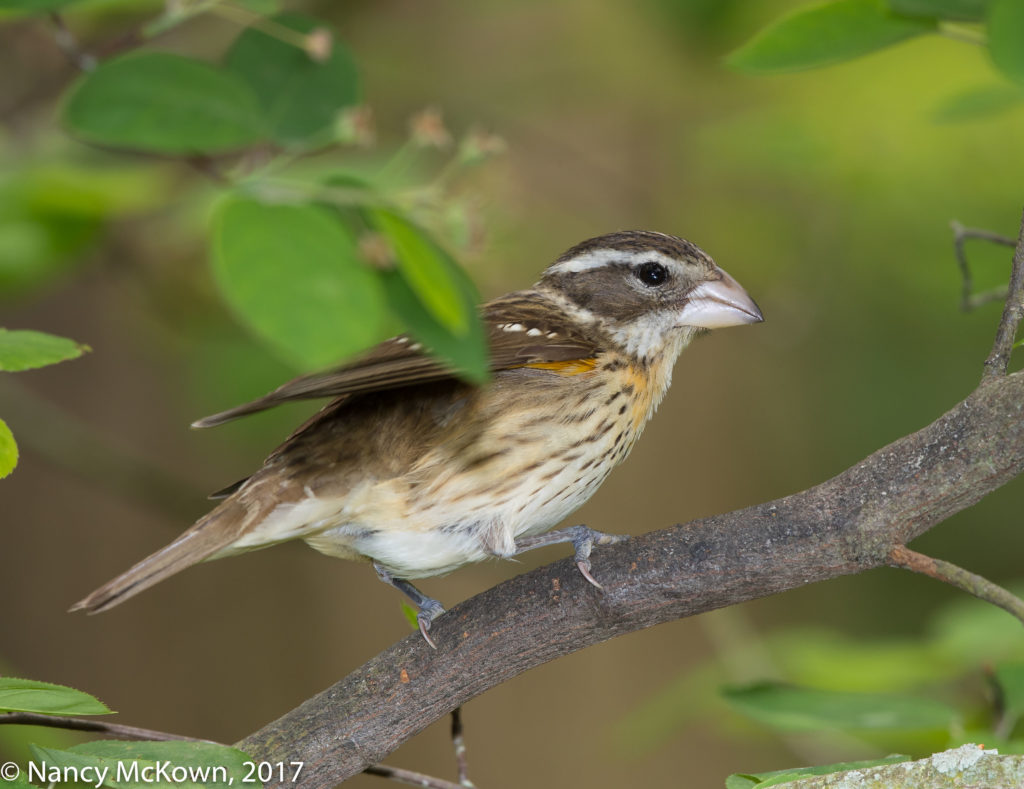Photographing Rose Breasted Grosbeaks
It’s quite a treat to be able to photograph a species of bird throughout the spring and summer seasons. At least six pairs of barrel chested Rose Breasted Grosbeaks nest in or near our yard each year. They arrive in late April/early May around the same time as the Baltimore Orioles. Most are bold individuals, rarely willing to wait in line at the feeders or the suet. The fledglings start following their parents to the free food in mid-June- lots of them all at once. (NOTE: My bird books note that Rose Breasted Grosbeaks produce only one clutch per season.) The females of this species look quite plain compared with the males and can be mistaken for a large female Purple Finch..until you get a look at their size and sturdiness at close range. Rose Breasted Grosbeaks head south for Central and S. American while it’s still warm….. in early September.

Perhaps a first year Male.
ISO 400; f/9; 1/250 Second
Masking in Post Processing
Anybody who spends a lot of time reviewing images and examining them for detail and sharpness is bound to (over time) develop a more discriminating eye. With my newest camera, the Canon 1D X Mark II, I find there is less need in post processing to use the Lightroom sliders that impact sharpening, clarity, vibrance, highlighting, saturation, shadows, and noise reduction. Once in a while though, I like to experiment with the sharpening sliders, especially the one labeled “masking”.
When I first started loading my images into Lightroom, I never really paid much attention to how the process of masking affected my images. I knew that this Lightroom post processing slider was not intended to fix out of focus photos…. I knew procedurally that I had to hold down the option key while I moved the slider to the right…. and that I was to stop moving the slider when the pebbly background looked completely black.

Young Female Rose Breasted Grosbeak
(or, with that splash of color, is it a young male?)
ISO400; f/10; 1/250 Second
Post processing is very time consuming and not especially fun. It’s best to know the what and why of those procedures before spending time on them.
A few thoughts about the process and benefits of masking:
- When in Lightroom’s Masking view….. while you are holding down the option key (or alt key with PC) with one hand and moving the sliding bar with your mouse, you will see only a grey scale overlay of your image. In this mode, you can observe that the areas in white will be sharpened and the areas in black will remain unsharpened. No distracting colors are observable.
- When the slider is set to 0, everything looks white so the entirety of the image gets the same amount of sharpening, as specified in the 3 sliders directly above the masking slider (amount, radius, detail).
- When the masking slider is set to 100, only the strongest whitest edges of the image get sharpened. (You can see these edges when you hold down the alt or option key while moving the slider.)
- How do I know how much masking to use? As you move the slider toward 100, watch how the graininess in and around your subject and in the background slowly turn SOLIDLY dark. At the point where you see the graininess disappear and only a black background remains, you stop moving the masking slider. Lightroom will then apply sharpening only to the white areas… and leave the dark areas unsharpened.
- It’s important not to go overboard with any of the sharpening tools in Lightroom. Over sharpening brings out more noise, zigzag lines and/or unnatural looking borders around your subject.
- Sharpening your subject and not the other parts of the image helps to make it stand out more.

A Flash of the Rose-Red Feathers Under His Wing.
The Enormous Bill Still Stands Out.
ISO400; f/9; 1/250 Second
NOTE: It is important to note that the detail quality improvements brought about though the process of masking will likely not knock-the-socks-off the typical fan of bird photography. In fact, I have learned NOT to expect people who are not photographers to notice or care.








